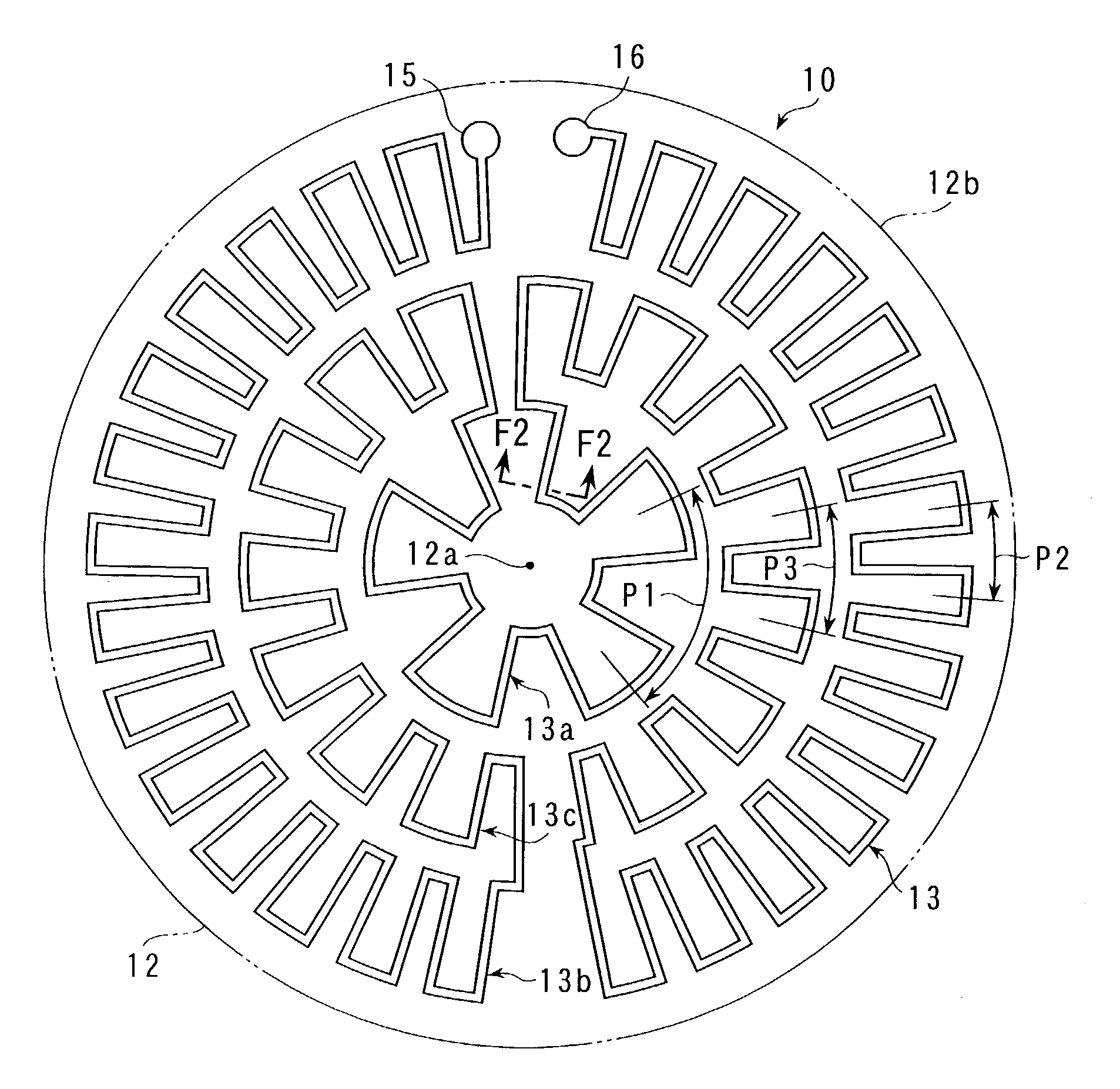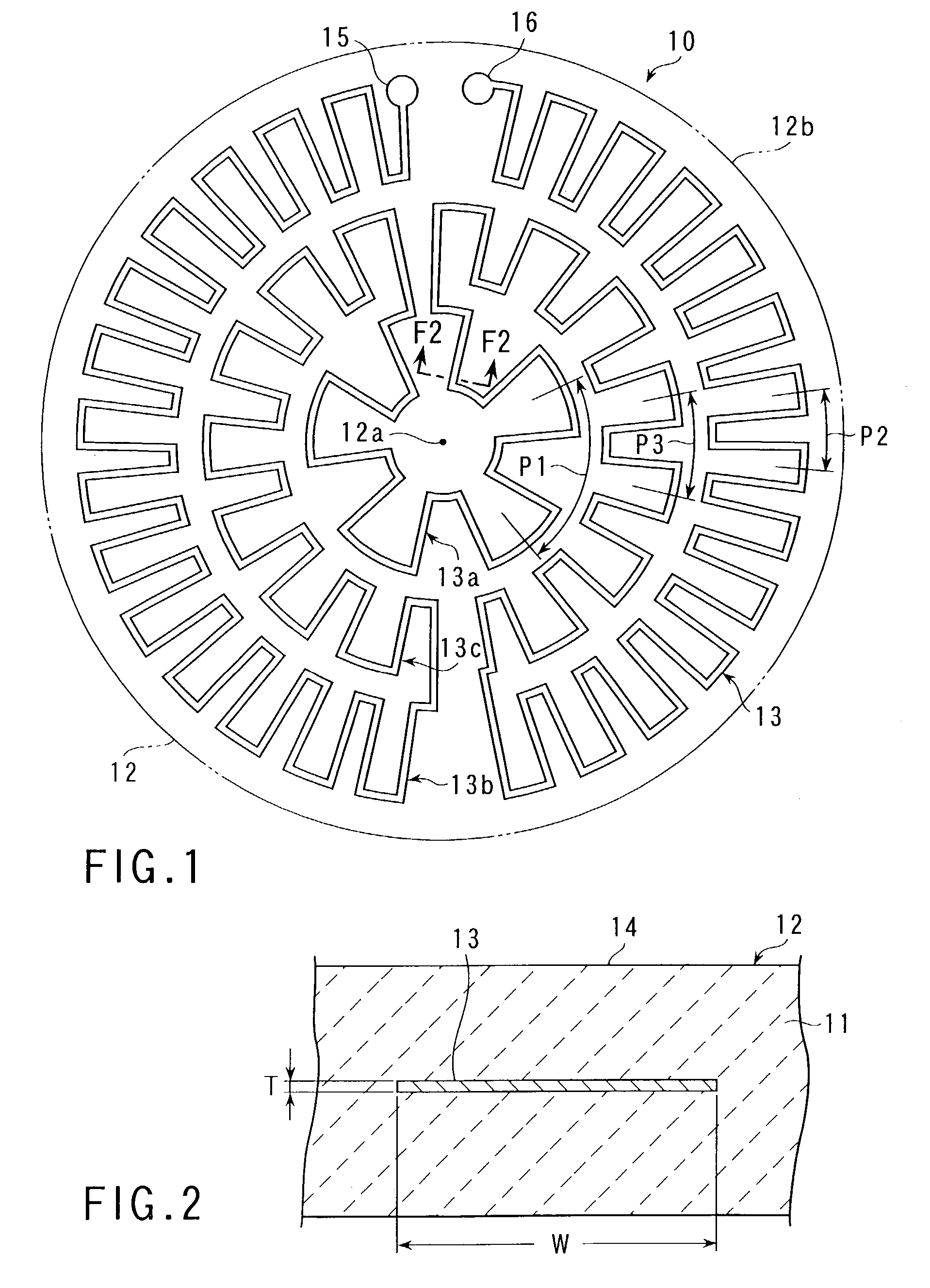Ceramics heater
a ceramic heater and heater body technology, applied in the field of ceramic heaters, can solve the problems of grain boundary cracks, poor temperature uniformity of conventional ceramic heaters, and poor temperature uniformity of conventional ceramic heaters, and achieve the effect of satisfying temperature uniformity and stable heating valu
- Summary
- Abstract
- Description
- Claims
- Application Information
AI Technical Summary
Benefits of technology
Problems solved by technology
Method used
Image
Examples
Embodiment Construction
[0031]An embodiment of the present invention will now be described with reference to FIGS. 1 to 6.
[0032]As shown in FIGS. 1 and 2, a ceramics heater 10 comprises a substantially circular heater plate 12, formed of ceramics 11 such as aluminum nitride, and a metal foil heater wire 13 embedded in the plate 12. The heater plate 12 is formed by sintering ceramics material powder into a given shape. In FIG. 1, the heater plate 12 is shown only in outline.
[0033]The ceramics heater 10 is used in a semiconductor manufacturing device or a thin-film manufacturing device for glass substrates, for example. The upper surface of the heater plate 12 forms a flat work bearing surface 14 that can support a work such as a semiconductor wafer thereon. The heater plate 12 has a diameter of about 250 mm and a thickness of 15 mm to 30 mm, for example. Since these dimensions are suitably set according to the specifications, such as dimensions, of the work to be heated, however, they are not limited to the...
PUM
 Login to View More
Login to View More Abstract
Description
Claims
Application Information
 Login to View More
Login to View More - R&D
- Intellectual Property
- Life Sciences
- Materials
- Tech Scout
- Unparalleled Data Quality
- Higher Quality Content
- 60% Fewer Hallucinations
Browse by: Latest US Patents, China's latest patents, Technical Efficacy Thesaurus, Application Domain, Technology Topic, Popular Technical Reports.
© 2025 PatSnap. All rights reserved.Legal|Privacy policy|Modern Slavery Act Transparency Statement|Sitemap|About US| Contact US: help@patsnap.com



